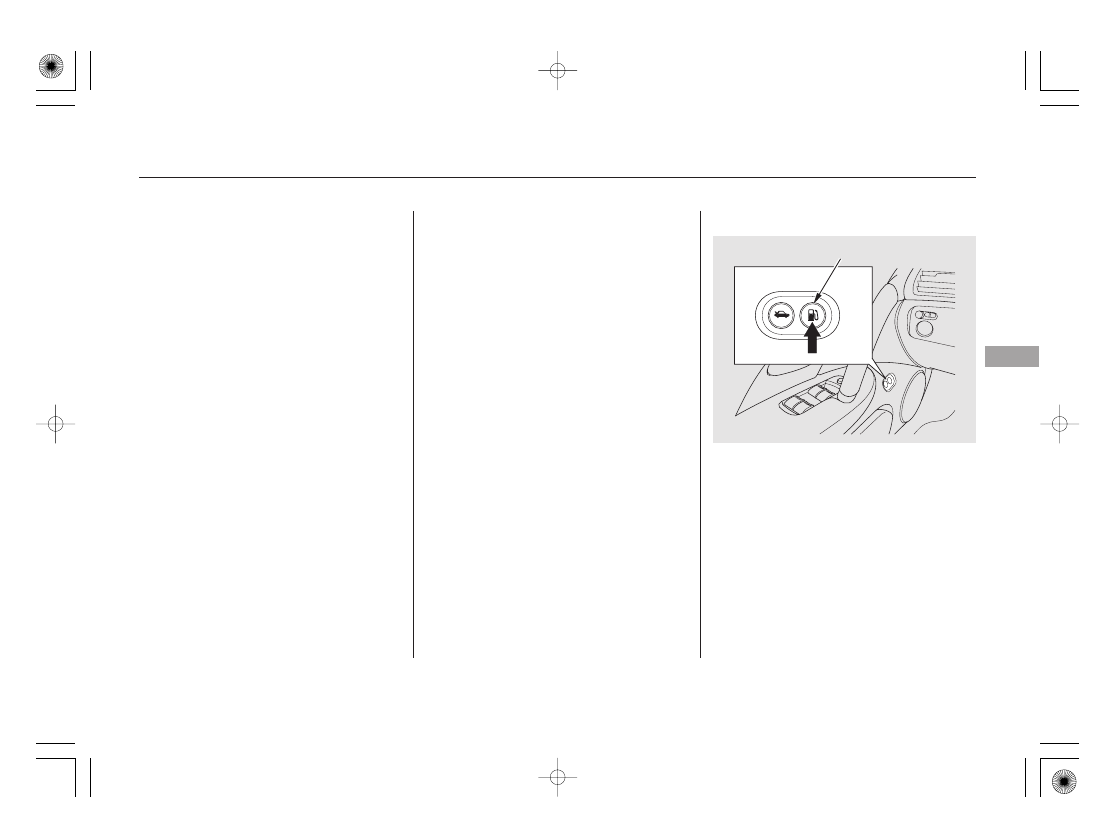Acura RL (2011 year). Manual - part 25

CONTINUED
Park with the driver’s side closest
to the service station pump.
Open the fuel fill door by pressing
the button in the driver’s door (to
open the fuel fill door manually,
see page
).
Because the level of detergency and
additives in gasoline vary in the
market, Honda endorses the use of
‘‘TOP TIER Detergent Gasoline’’
where available to help maintain the
performance and reliability of your
vehicle. TOP TIER Detergent
Gasoline meets a new gasoline
standard jointly established by
leading automotive manufacturers to
meet the needs of today’s advanced
engines. Qualifying gasoline retailers
will, in most cases, identify their
gasoline as having met ‘‘TOP TIER
Detergent Gasoline’’ standards at the
retail location. This fuel is
guaranteed to contain the proper
level of detergent additives and be
free of metallic additives. The proper
level of detergent additives, and
absence of harmful metallic additives
in gasoline, help avoid build-up of
deposits in your engine and emission
control system.
For further important fuel-related
information for your vehicle, or on
information on gasoline that does not
contain MMT, visit My Acura at
. In Canada, visit
for additional
information on gasoline. For more
information on top tier gasoline, visit
.
1.
2.
511
owners.acura.com
www.acura.ca
www.toptiergas.com
Service Station Procedures
Ref ueling
B
e
fo
re
D
riv
ing
383
FUEL FILL DOOR RELEASE BUTTON
10/08/04 19:49:24 31SJA660_388